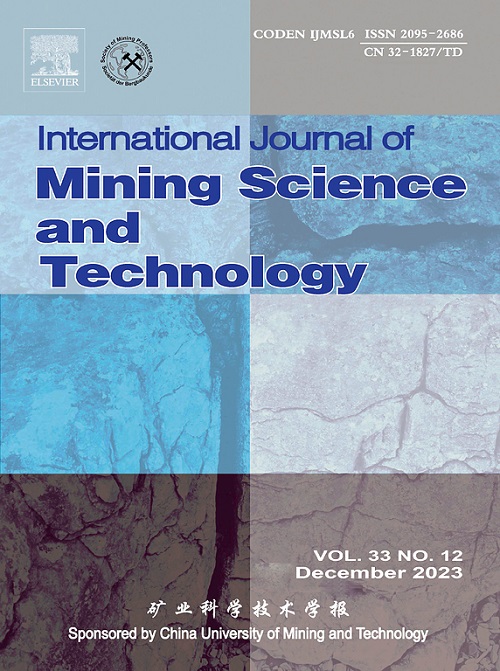天文一号着陆坑的形成与着陆点附近火星土壤的力学特性
IF 11.7
1区 工程技术
Q1 MINING & MINERAL PROCESSING
International Journal of Mining Science and Technology
Pub Date : 2024-09-01
DOI:10.1016/j.ijmst.2024.08.010
引用次数: 0
摘要
天文一号在乌托邦星着陆后,形成了火星上最深的着陆坑,深约40厘米,揭示了火星土壤力学性质的珍贵信息。我们基于计算流体动力学(CFD)方法和根据罗伯茨理论修改的侵蚀模型,建立了羽面相互作用(PSI)和陨石坑形成的数值模型。对不同喷嘴高度和土壤力学性能的情况进行了比较研究。内聚力和内摩擦角的增加导致侵蚀速率和最大坑深的减小,其中内聚力的影响更大。喷嘴高度的影响并不明显,因为它与冲击钻石的位置相互作用,共同控制侵蚀过程。此外,我们还根据形态特征将着陆坑的演变分为分散侵蚀模式和集中侵蚀模式。最后,我们估算了 "天问一号 "着陆点附近火星土壤的力学性质上限,内聚力为 2612 至 2042 Pa,内摩擦角为 25 至 41°。本文章由计算机程序翻译,如有差异,请以英文原文为准。
Formation of Tianwen-1 landing crater and mechanical properties of Martian soil near the landing site
After landing in the Utopia Planitia, Tianwen-1 formed the deepest landing crater on Mars, approximately 40 cm deep, exposing precious information about the mechanical properties of Martian soil. We established numerical models for the plume-surface interaction (PSI) and the crater formation based on Computational Fluid Dynamics (CFD) methods and the erosion model modified from Roberts’ Theory. Comparative studies of cases were conducted with different nozzle heights and soil mechanical properties. The increase in cohesion and internal friction angle leads to a decrease in erosion rate and maximum crater depth, with the cohesion having a greater impact. The influence of the nozzle height is not clear, as it interacts with the position of the Shock Diamond to jointly control the erosion process. Furthermore, we categorized the evolution of landing craters into the dispersive and the concentrated erosion modes based on the morphological characteristics. Finally, we estimated the upper limits of the Martian soil’s mechanical properties near Tianwen-1 landing site, with the cohesion ranging from 2612 to 2042 Pa and internal friction angle from 25° to 41°.
求助全文
通过发布文献求助,成功后即可免费获取论文全文。
去求助
来源期刊

International Journal of Mining Science and Technology
Earth and Planetary Sciences-Geotechnical Engineering and Engineering Geology
CiteScore
19.10
自引率
11.90%
发文量
2541
审稿时长
44 days
期刊介绍:
The International Journal of Mining Science and Technology, founded in 1990 as the Journal of China University of Mining and Technology, is a monthly English-language journal. It publishes original research papers and high-quality reviews that explore the latest advancements in theories, methodologies, and applications within the realm of mining sciences and technologies. The journal serves as an international exchange forum for readers and authors worldwide involved in mining sciences and technologies. All papers undergo a peer-review process and meticulous editing by specialists and authorities, with the entire submission-to-publication process conducted electronically.
 求助内容:
求助内容: 应助结果提醒方式:
应助结果提醒方式:


